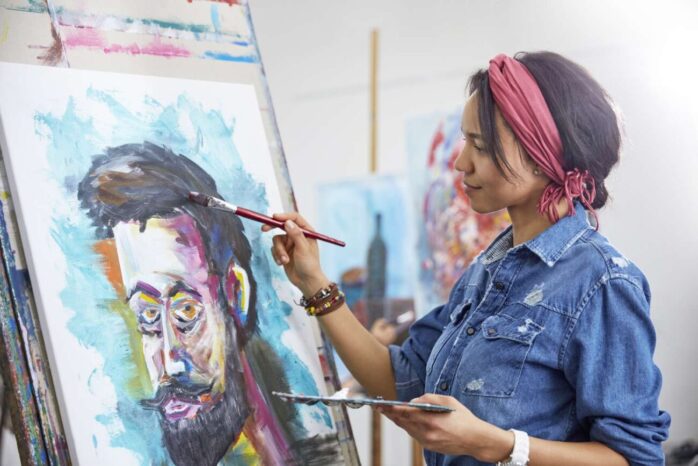
Portrait painting is an art genre that captures the likeness of specific human subjects. These paintings focus on immortalizing a subject on canvas from a certain angle. It highlights the personality and the aura of the person portrayed. Sometimes, the person depicted is famous; other times, an artist becomes enamored with a face and feels compelled to paint it.
This was the case with one Arabella Bouverie (née Ogle), a historical figure from the late 18th and early 19th centuries. The daughter of Admiral Sir Chaloner Ogle, Arabella, caught the eye of painter John Hoppner, who knew he had to commit her image to canvas. The resulting portrait of Mrs. Arabella Bouverie is the now highly recognizable painting of her sitting down, wearing a pearl necklace, and dressed in a flowing white gown with a blue ribbon at the waist. Her curly hair frames her face, and her smile is reminiscent of the Mona Lisa’s.
However, Mrs. Bouverie was not the first individual to sit for a painting. The oldest form of portrait painting is at least 5,000 years old, originating in ancient Egypt.
A Brief History of Portrait Painting
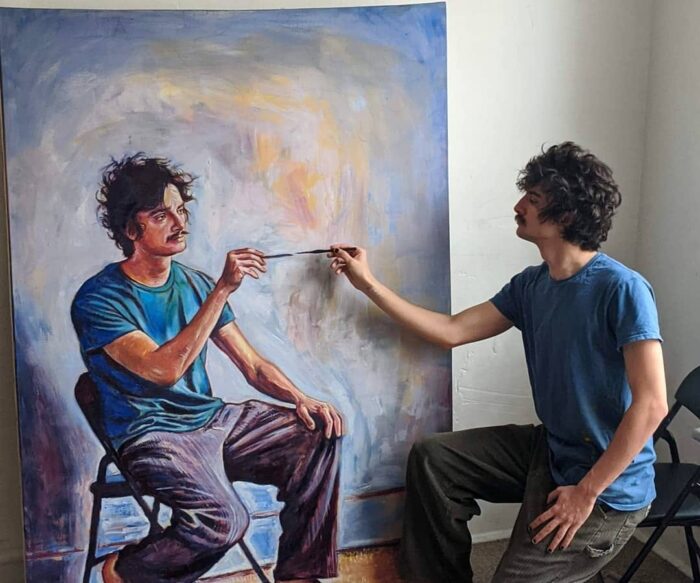
The ancient Egyptians often created portraits of their dead. As portraiture continued to evolve from this, and before the invention of photography, artists used a variety of mediums to capture the likeness of their subjects. This included oil paints. Portrait painting flourished in Europe, and its popularity can be traced back to archaeological finds from the Fertile Crescent. This art genre boomed during the Renaissance and Baroque periods. During the 17th century, symbolism and self-expression in portraits took center stage.
Throughout the evolution of portrait painting, many famous artists have contributed to the genre. These include William Dobson, William Hogarth, Sir Joshua Reynolds, Thomas Gainsborough, and Sir Thomas Lawrence. Their skills, and those of many other painters, gave the world some of the most memorable portrait paintings in history.
Famous Portrait Paintings in History
Some of the most famous portraits painted over the years include self-portraits and paintings portraying more than one person.
Mona Lisa by Leonardo da Vinci
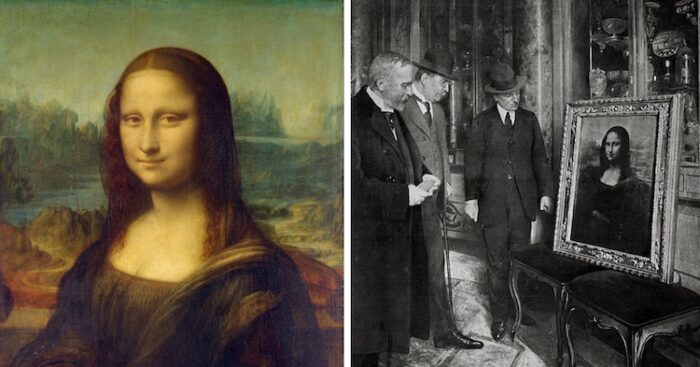
The Mona Lisa portrait is arguably the most famous painting in the world. It is unknown who the woman in the frame is. Still, some historians believe it may depict Lisa del Giocondo, the wife of Florentine merchant Francesco di Bartolomeo del Giocondo.
Leonardo da Vinci began his Mona Lisa painting in 1503, adding layers of oil glazes over the years until he died in 1519. Some believe that Da Vinci wanted to reflect the link between nature and humanity by echoing Mona Lisa’s hair and clothing in the landscape behind her. Art lovers can’t get enough of the enigmatic Mona Lisa’s half-smile. Thus, the original frame is safely behind bulletproof glass in Paris’ Louvre Museum.
Laughing Cavalier by Frans Hals
Frans Hals was an extremely talented portrait painter, as evidenced by his Laughing Cavalier painting. All of Hals’ portraits are exceptionally lifelike, especially the one of Cavalier. It is a joyous portrait of a 26-year-old man exuding confidence. Examining the colors of the black sash around the man’s waist, it’s clear why Van Gogh once exclaimed, “Frans Hals must have had 27 blacks”! Even though Hals used a limited color palette for all his portraits.
Frans Hals, Rembrandt van Rijn, and Johannes Vermeer were the pioneers of the Golden Age of Dutch Art in the 1600s, and their portraits are still extraordinarily valuable today.
The Milkmaid by Johannes Vermeer
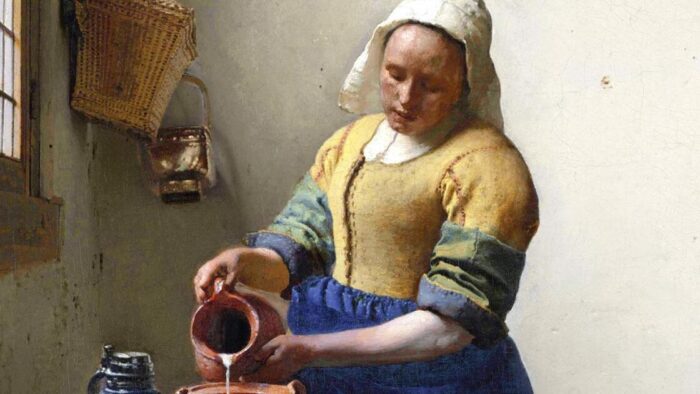
One of Johannes Vermeer’s most well-known portraits portrays a scene of everyday life: A milkmaid standing in a kitchen pouring milk into a bowl. Vermeer rendered concentration on her face as the milk ran into the bowl staggeringly well. The arrangement of the objects in the kitchen and the visible texture of the bread stacked on the table are also incredibly convincing. This is because of Vermeer’s skill in using light and perspective.
This painting has been auctioned several times throughout the past centuries, highlighting its popularity.
Portrait of Madame X by John Singer Sargent
Madame X is a renowned portrait by John Singer Sargent between 1883 and 1884. This gorgeous masterpiece features Virginie Amélie Avegno Gautreau. Gautreau was a socialite and wife of French banker Pierre Gautreau.
The celebrated painting is undoubtedly striking in its composition and depiction of Virginie. Her pose is daring and provocative and was considered scandalous at the time. It even stirred controversy and debate as the pose and the painting challenged the norms of society and art.
Sargent displayed excellent technique and skill in capturing Virginie’s elegance and luminous skin. The dark background accentuates her skin and gown, adding to the visual impact.
It is fair to say the ‘scandal’ surrounding the painting helped establish Sargent’s reputation as a talented portraitist. Today, people consider it one of his best works.
Self-portrait With a Straw Hat by Vincent Van Gogh
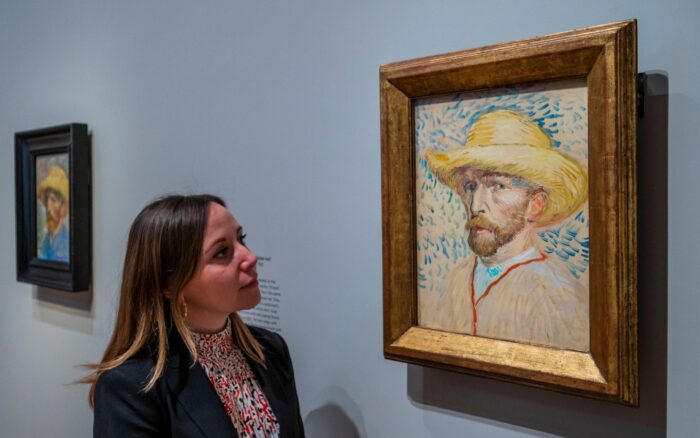
Vincent van Gogh is one of the most fascinating painters in history. He was a Post-Impressionist painter, and people did not appreciate him in his own time. But today, experts and art enthusiasts worldwide continue to laud his work. Along with The Starry Night, The Potato Eaters, and Irises, Van Gogh painted more than 20 self-portraits between 1886 and 1888.
Van Gogh used cardboard instead of canvas for his Self-Portrait with a Straw Hat painting. He had a pained expression in the painting while staring from the cardboard with one blue and one green eye. This portrait depicts Van Gogh’s struggle with mental illness and failing health. As incredible as the portrait is, it is also heartbreaking.
The Genre of Portrait Painting Today
The 20th century saw a continuance of artistic movements. The genre of portrait painting adapted to the evolving art landscape. From Picasso’s cubist paintings to Pollock’s abstracts, artists pushed the boundaries of convention. Portraits were no longer confined to depicting reality but became an outlet for unusual concepts and emotions.
Today, portrait painting remains a relevant genre. Modern portrait artists continue to challenge the norms of convention regarding identity, representation, and gender. Moreover, the advent of AI has opened up new avenues of art exploration. Artists can merge traditional painting techniques with digital tools to create never-before-seen fusion art.





